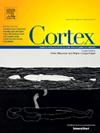Using non-invasive brain stimulation to modulate performance in visuomotor rotation adaptation: A scoping review
IF 3.3
2区 心理学
Q1 BEHAVIORAL SCIENCES
引用次数: 0
Abstract
As research on the visuomotor rotation (VMR) adaptation expands its scope from behavioral science to encompass neuropsychological perspectives, an increasing number of studies have employed non-invasive brain stimulation (NIBS) techniques to explore the specific contributions of different neural structures to VMR adaptation. Despite early studies suggesting that cerebellar stimulation influenced the rate of adaptation and that stimulating primary motor cortex led to an enhanced retention of newly learned adaptation, subsequent studies could not always achieve consistent results. To probe this inconsistency, we systematically comb through past studies and extract numerous details, including paradigm designs, context settings, and modulation protocols in this scoping review. In summary, the paradigm design primarily serves two purposes: to dissociate implicit and explicit adaptation and to assess the retention of motor memory, whilst context settings such as apparatus, movement-related parameters and the information provided for subjects may complicate the modulated neuropsychological processes. We also conclude key NIBS parameters such as target regions and timing in stimulation protocols. Furthermore, we recognize the potential of neurophysiological biomarkers to support future VMR studies that incorporate NIBS and advocate for the use of several newly emerging NIBS techniques to enrich the field.
使用非侵入性脑刺激调节视觉运动旋转适应的表现:范围综述
随着视觉运动旋转(VMR)适应的研究范围从行为科学扩展到神经心理学,越来越多的研究采用非侵入性脑刺激(NIBS)技术来探索不同神经结构对VMR适应的具体贡献。尽管早期的研究表明,刺激小脑会影响适应的速度,刺激初级运动皮层会增强对新学适应的保留,但随后的研究并不总是得到一致的结果。为了探究这种不一致,我们系统地梳理了过去的研究并提取了许多细节,包括范式设计、上下文设置和调制协议。总之,范式设计主要有两个目的:分离内隐适应和外显适应,评估运动记忆的保留,而环境设置,如仪器,运动相关参数和提供给受试者的信息可能使调节的神经心理过程复杂化。我们还总结了刺激方案中的关键NIBS参数,如靶区和时间。此外,我们认识到神经生理生物标志物的潜力,以支持未来纳入NIBS的VMR研究,并倡导使用几种新兴的NIBS技术来丰富该领域。
本文章由计算机程序翻译,如有差异,请以英文原文为准。
求助全文
约1分钟内获得全文
求助全文
来源期刊

Cortex
医学-行为科学
CiteScore
7.00
自引率
5.60%
发文量
250
审稿时长
74 days
期刊介绍:
CORTEX is an international journal devoted to the study of cognition and of the relationship between the nervous system and mental processes, particularly as these are reflected in the behaviour of patients with acquired brain lesions, normal volunteers, children with typical and atypical development, and in the activation of brain regions and systems as recorded by functional neuroimaging techniques. It was founded in 1964 by Ennio De Renzi.
 求助内容:
求助内容: 应助结果提醒方式:
应助结果提醒方式:


